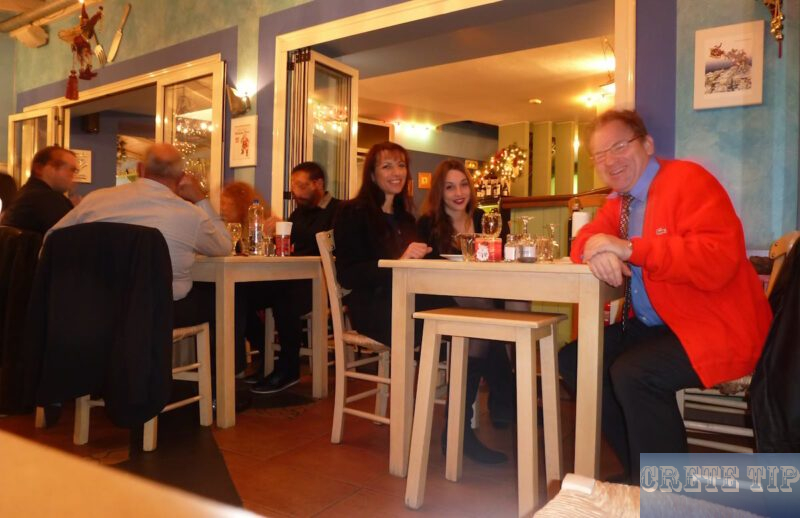Crete Aquarium at Gournes.
The Crete Aquarium is the most spectacular marine aquarium on Crete with many aquariums, some of them huge.
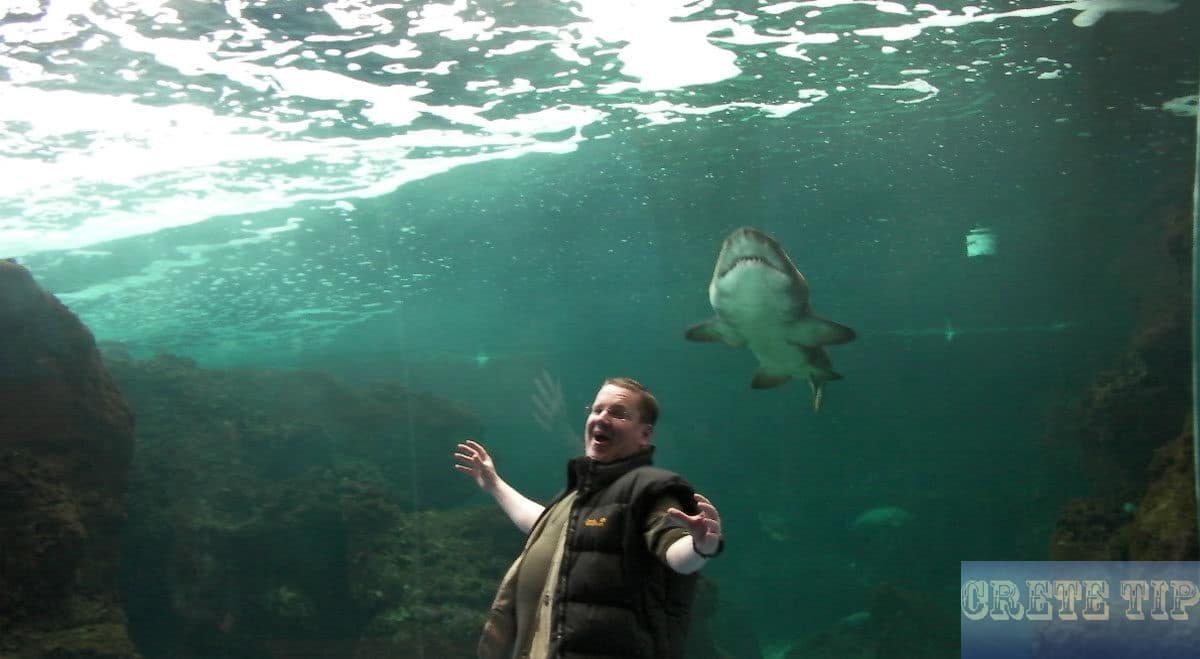
At Gournes, 10 miles (ca. 16 km) east of Heraklion, the most frequently developed coastline is interrupted. There, to the west of the village of Gournes, a former air force base of the US Air Force awaits its rehabilitation and revitalization.
The Crete Aquarium
So far only the Gournes Animal Shelter and the Crete Aquarium were built, which are surrounded by destroyed fences and crumbling roadways.
The Crete Aquarium is the most spectacular marine aquarium on Crete and the signposts from the highway can hardly be overlooked.
The Crete Aquarium has 30 tanks, some of which are huge, and houses almost all the marine animals of the Mediterranean, from threatening sharks to colorful jellyfish.
The Crete Aquarium is part of the Greek Center for Marine Research, which is a purely pedagogical, scientific and charitable project.
Most of the fish and creatures found in the waters around Crete are among the 250 species present here and there are more than 2,500 individual creatures. It is the largest of its kind in the Mediterranean and was built in 2005 and considerably expanded in 2008-2009 to its present size.
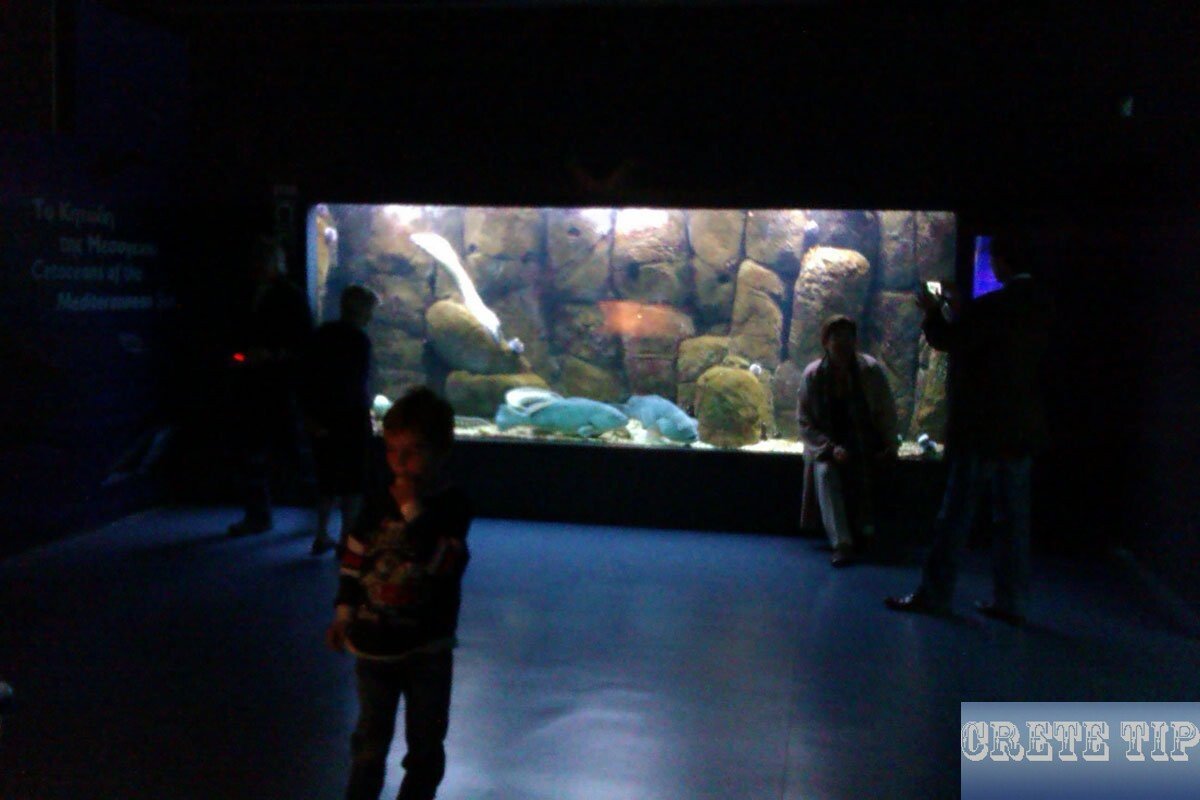
The aquarium is divided into several areas. At the beginning, you can find the ground and cave dwellers in darkened aquariums, which correspond to their natural environment. These include rays, grouper, the red dragon head, and other species like these.
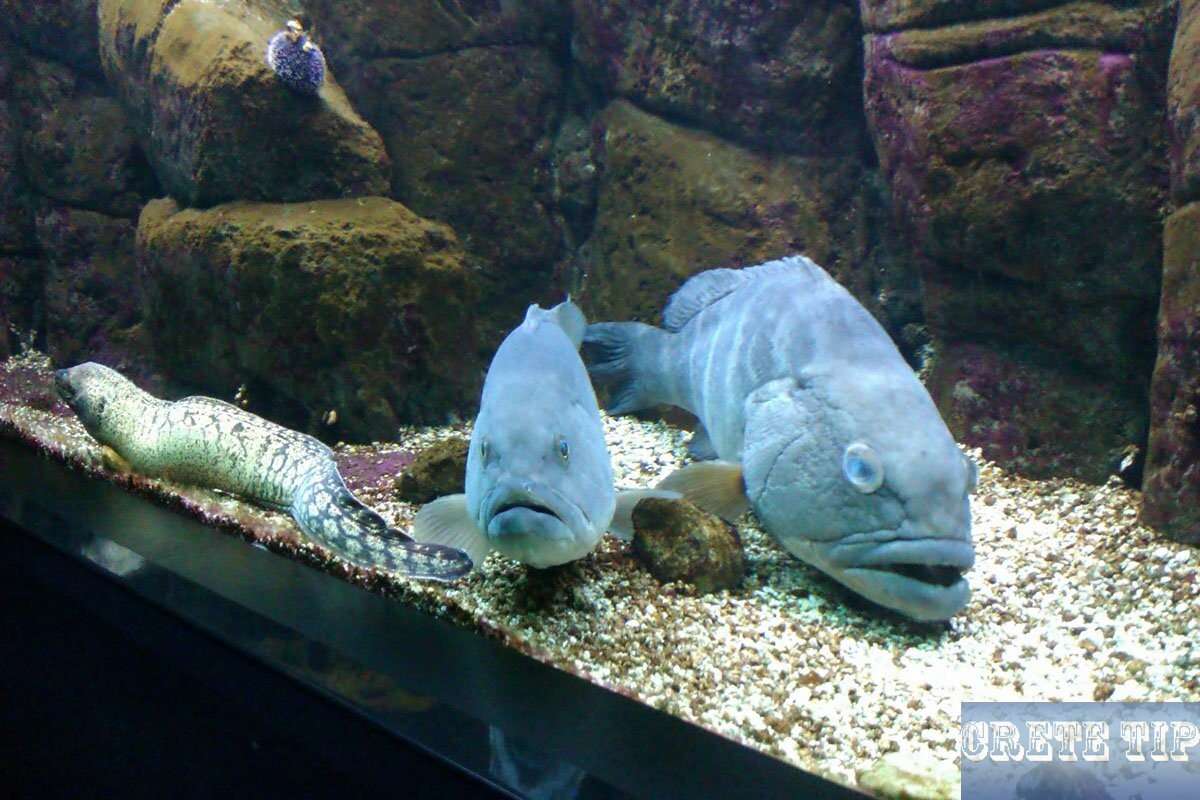
Then follow the fishes from the open sea, like the turtle ‘Caretta Carette’, sharks, cuttlefish and bear burs.
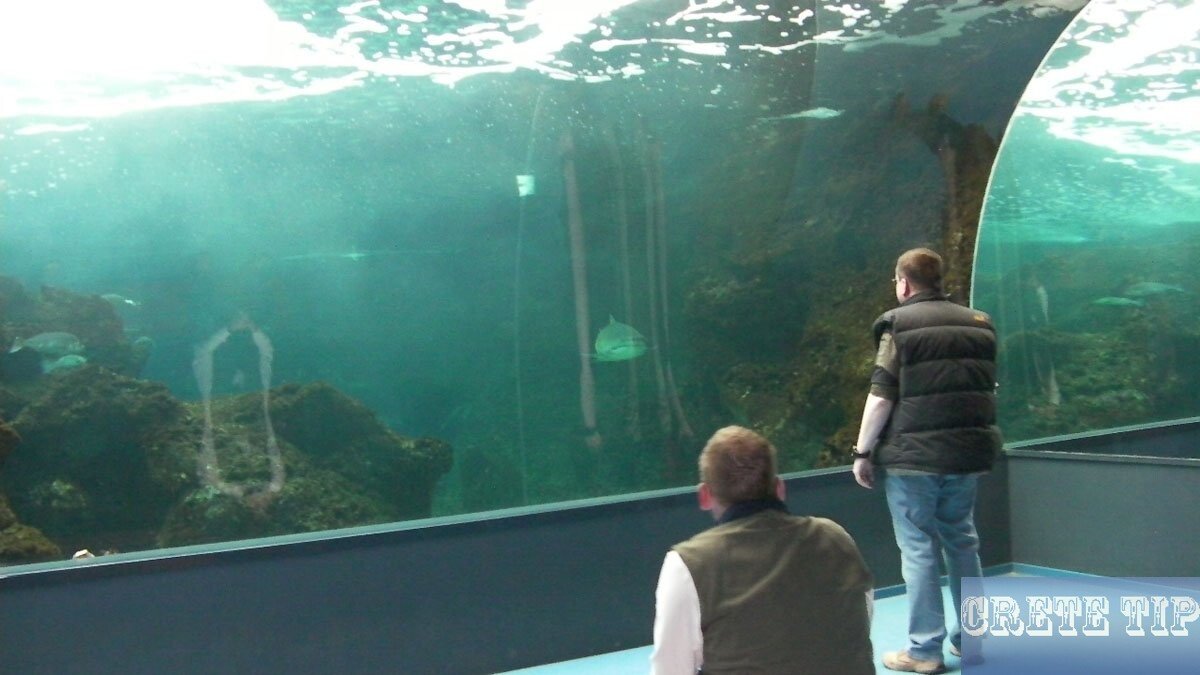
As next are following the marine animals of the coastal zone before Crete, such as water anemones, lobster, jellyfish and the sea junker.
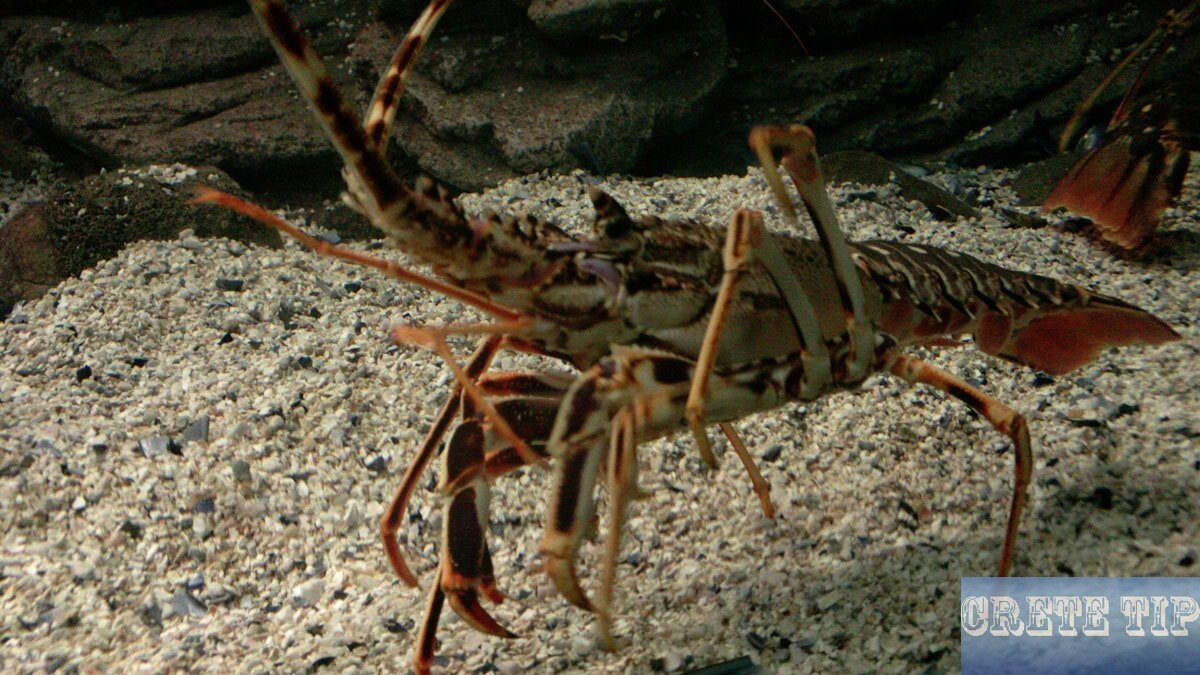
Finally, the area of the tropical species migrating through the Suez Canal from the Red Sea. These include the clown fish, the up to 2 yards (1.83 m) long hunter Cobia and the rabbit fish. The Center for Marine Research also examines the impact of these ‘immigrants’ on the natural population in the eastern Mediterranean.
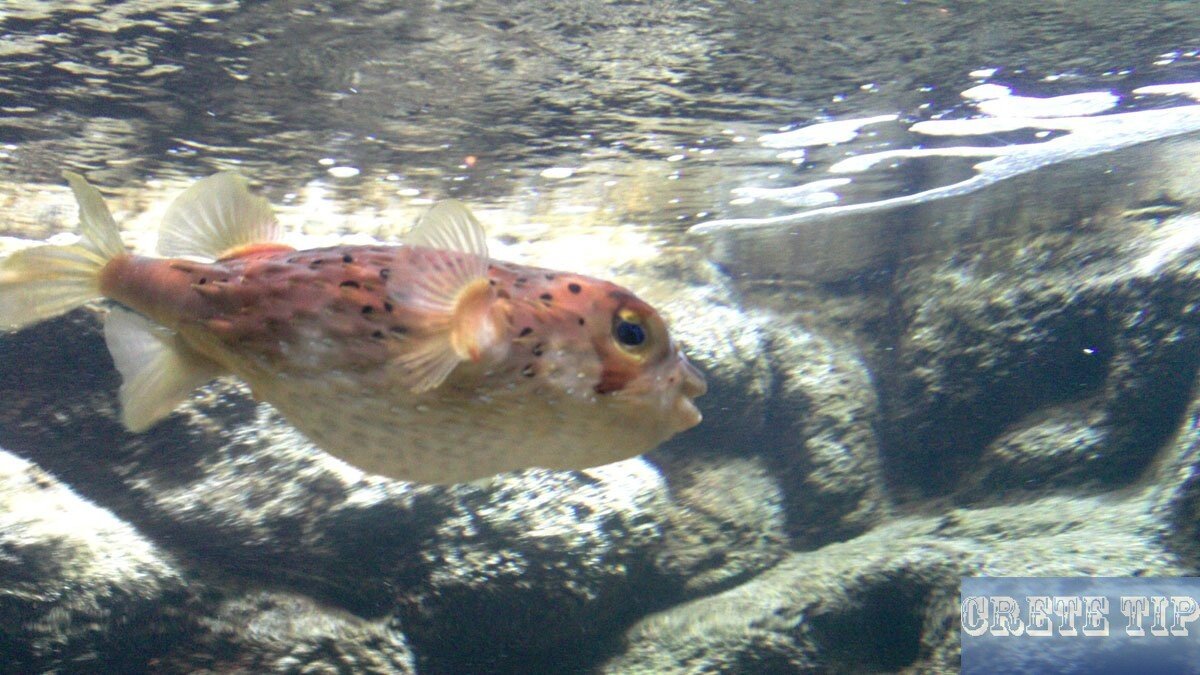
Apart from people with extensive knowledge of the marine biology, it is recommended to take the audio guide at the cash desk, which provides many fascinating background information about the sea life to be seen.
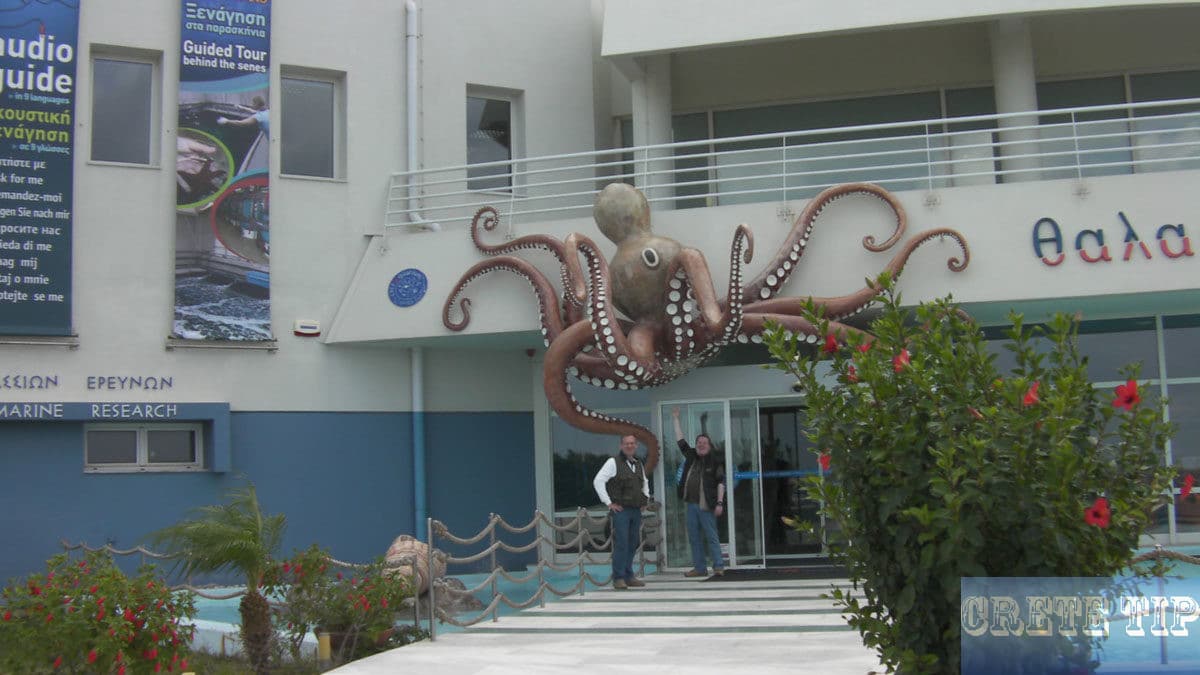
For the visit, which is always impressive and never boring, can be planned well and gladly at least 2 hours. In addition to the aquarium, there is also a cinema, in which various nature documentaries are shown, but for which extra time should be planned.
There is also a cafeteria and on the beaches in front of the Crete Aquarium you can also spend a day in the sun and bathing.
Opening hours and entrance fees
Crete Aquarium Admission Ticket
From May 1 to September 30, the Crete Aquarium is open daily from 9:30 am to 9:00 pm, outside this period daily from 9:30 am to 5 pm.
Click here for probably actual updates at the Crete Aquarium website
More photos from the Crete Aquarium:

Directions to Crete Aquarium
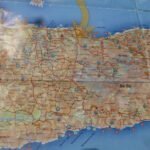
Click here: Directions Crete Aquarium.
The sea around Crete
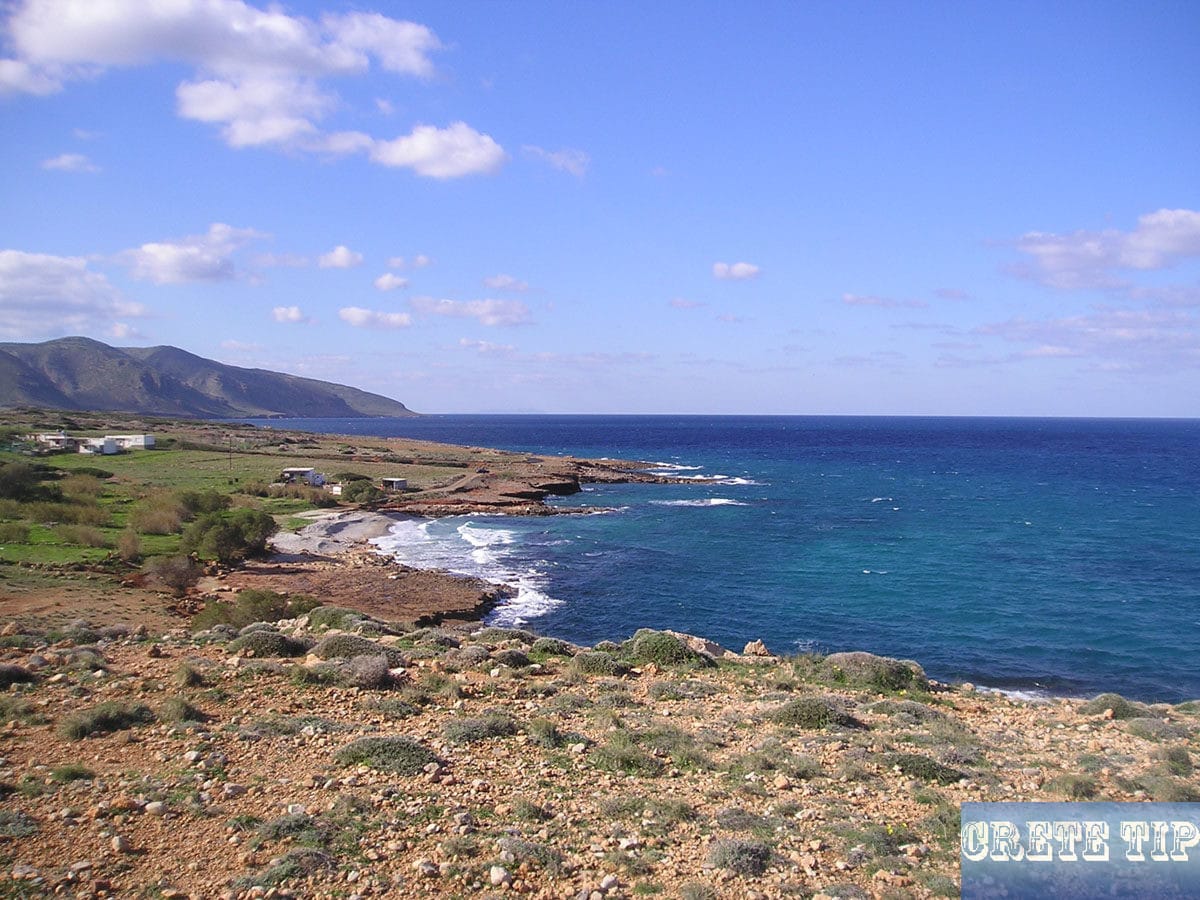
The coastal region and the surrounding sea play an important role in the lives of locals and also visitors. They represent a valuable asset of high importance.
It is as important for climate regulation, food production through fishing and aquaculture, as it is for tourism, from which a good part of the inhabitants of the large island live.
Since the Minoan era, the dynamism, status, longevity and prosperity of the island’s inhabitants have been largely generated by their strong attachment to the marine environment. This included the exploration and establishment of sea routes that connected them to the cities of other cultures on neighbouring islands and also to the mainland, and also the exploitation of marine goods off Crete.
The marine environment is a frequent motif in the frescoes and other artworks of Minoan culture, underlining the great importance of coastal and marine ecosystems to the Minoans.
The economic and social prosperity of Crete was and is to a large extent linked to activities related to the marine and coastal environment.
According to the 2011 general census, Crete has 623,065 permanent inhabitants. It is worth noting that the five most populous cities of Crete (Heraklion, Chania, Rethymno, Aghios Nikolaos and Ierapetra) are all located by the sea and account for about 50% of the total population of the island (312,985 inhabitants), thus underlining the importance of coastal ecosystems for the local population of Crete.
However, the sea and the coastal region are more threatened today than ever before, and the vulnerability of this ecosystem is highlighted in the following two examples.
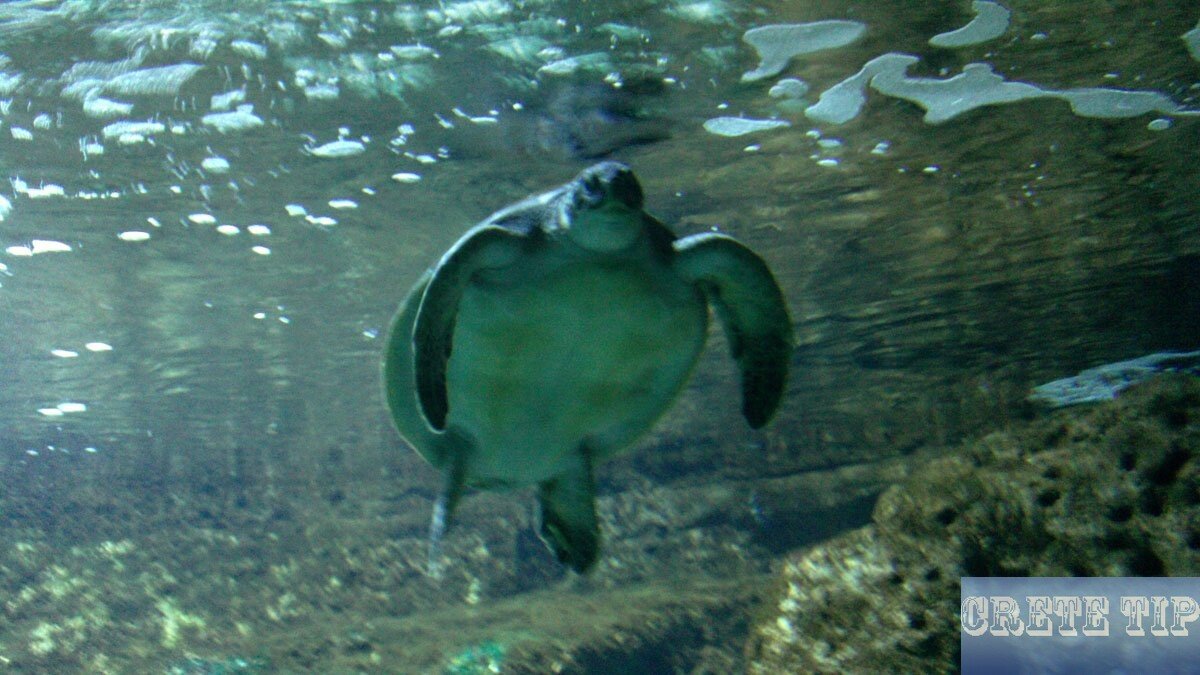
Sea turtle Caretta caretta
The sea turtle Caretta caretta is one of the animal symbols of the Mediterranean. Greece is home to the most sea turtle nests compared to the other Mediterranean countries.
The best-known nests are on Zakynthos, in Kyparisia Bay, in Laconia and on Crete. On Greece’s largest island, the beaches around Rethymno, Chania and in the bay of Messara are particularly noteworthy.
Crete is an important port of call for this species, as hundreds of sea turtles visit the island’s sandy beaches every year to lay their eggs. The areas with the most nests are the bay of Chania, the beach of Rethymno and, south of Heraklion, the beach of Kommos in Messara.
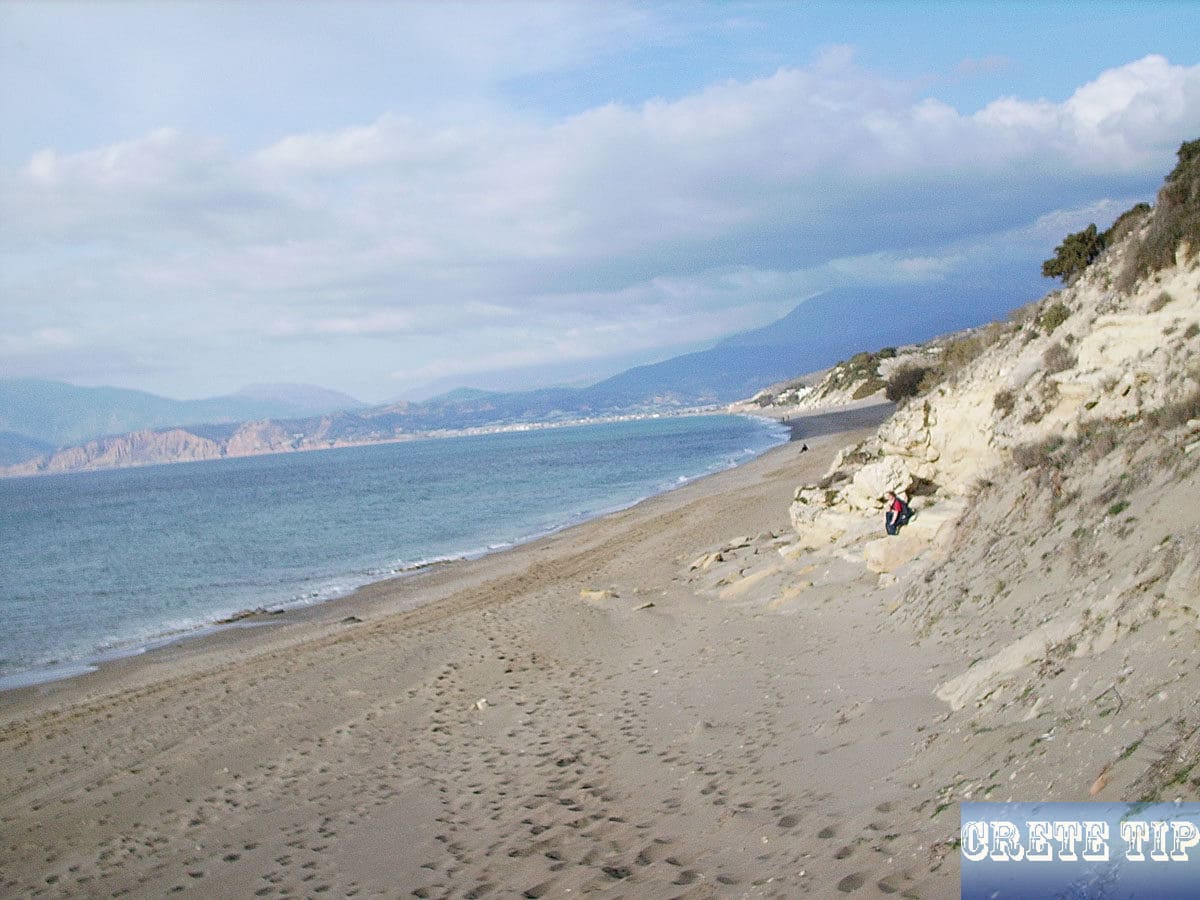
Sea turtles of the species Caretta caretta spend most of their lives in the sea and only the females come to the coast to lay their eggs during the breeding season. This breeding season lasts from May to September every year.
It is important to note that the turtles always return to the same beaches where they were born to lay their eggs.
The ideal place for the turtles to lay their eggs is on a quiet and sandy beach where there are no lights at night and no people, motor boats or other noise during the day. Mass tourism in these areas does not encourage reproduction of this species.
In any case, newborn turtles are immediately exposed to their natural enemies, which include seabirds, which prey on them on the way from the nest to the sea, and carnivorous fish when they first reach the sea. However, only larger animals, such as the shark, can then pose a threat to the adult sea turtles.
Caretta caretta is listed in the ‘Red Book’ of threatened species of the International Union of the Conservation of Nature (IUCN). The threats to the species are mainly fishing gear, in which the turtles get entangled, and solid waste, especially plastic bags, which the turtles can mistake for jellyfish and get caught in and suffocate. In addition, a decline in the number of nests has been observed, which is attributed to the loss of the originally suitable sandy beaches over time.
A study conducted by the University of the Aegean in 2010, using part of Rethymno beach as a study area, found that only 2.6% of tourist visitors participate in eco-tourism activities, while only one in four visitors is aware of the nature reserve in the prefecture of Rethymno.
Finally, visitors to the area studied agreed to pay 1.13 euros more per night to protect sea turtle nesting sites near Rethymno. The aim of this study was to assess the opinions of the visitors in the studied area in relation to the alternative environmental management strategies for the coastal and marine ecosystems.
The population of sea turtles breeding in Crete is at great risk of extinction, as studies show that the downward trend is mainly due to the failure to protect the species during the breeding season. Therefore, more effective measures are needed to protect them.
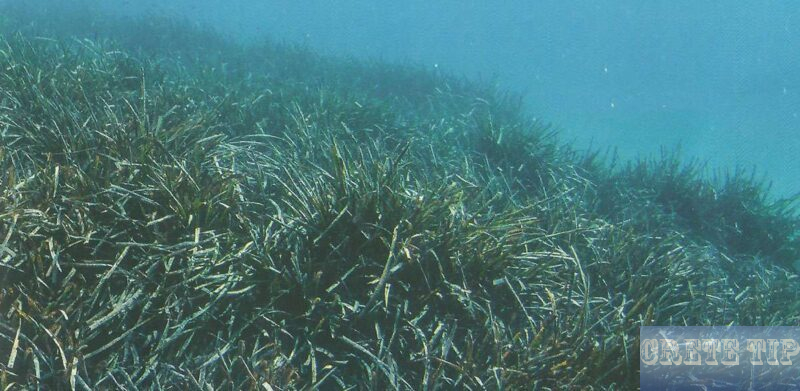
Posidonia Oceanica underwater seagrass meadows
The underwater seagrass meadows of Posidonia Oceanica are considered one of the richest and most valuable biotopes in the Mediterranean. The Poseidon plant (Neptune grass) Posidonia Oceanica is a black-green plant that is usually confused with the seagrasses. It is an endemic plant of the Mediterranean Sea, found in the sandy seabed of shallow marine areas, as well as in sand and biogenic sedimentary strips (particles of organic origin) between hard substrates.
Posidonia Oceanica is found in the sea at depths of up to 50 metres (55 yards), depending on the clarity of the water. The species is very resistant to temperature fluctuations, but at the same time is very sensitive to changes in salinity and nutrients, which can lead to eutrophication symptoms.
The species forms extensive meadows where many of the so-called ‘commercial’ marine species such as sponges, crabs, shrimps, crayfish, cuttlefish, squid, perch, scorpionfish, etc. find refuge and reproduce there.
Posidonia oceanica seagrass beds are characterised by high primary production. They can control the flow of surface sediments, protect sandy beaches from erosion and form their own ecosystem. This ecosystem is very diverse, so it is an important economic source for the local population.
Very often, people avoid the places in the sea where Posidonia Oceanica occurs, although the opposite should actually be the case. The species is considered a good biological indicator of the quality of marine waters and the condition of coastal systems.
The high sensitivity of the species to anthropogenic interference and the resulting changes in the marine environment, as well as its ecological role in the ecosystem, are the main reasons for the protection of the species in the European Union.
The ecosystem of Posidonia oceanica is one of the priority habitats of the Habitats Directive (92/43/EEC). In the measures for the conservation of marine flora in the Mediterranean Sea, special attention is paid to Posidonia oceanica seagrass beds due to their unique role in the marine environment as well as the ecosystem services they provide.
Although Posidonia Oceanica is protected, the areas of seagrass meadows continue to shrink. In the Mediterranean, the decline of seagrass beds in the last decade has led to a loss of 10 % of the profits from economic activities in the sea.
In Crete, so far only the seagrass meadows of Posidonia oceanica are protected within the NATURA 2000 nature conservation system. It is therefore important to record in detail the occurrence of Posidonia oceanica seagrass meadows around the island and to further research them and collect scientific data in the future.
Help for the underwater seagrass meadows Posidonia Oceanica
Posidonia oceanica, which you might hear called Neptune grass, is a truly vital underwater plant mostly hanging out in the Mediterranean Sea. It forms these dense, swaying meadows on the sea floor—almost like underwater forests—that are wildly important for marine life.
These seagrass meadows keep the water clearer and offer a safe haven for all sorts of creatures. They’re also oxygen machines, pumping out a surprising amount of O2 for the ecosystem.
It’s kind of fascinating how slowly these meadows grow; some patches are hundreds or even thousands of years old. Their thick, tangled root systems—called rhizomes—hold sediment in place, which helps cut down on coastal erosion.
That’s a big deal for the Greek coastline and, honestly, anywhere else they grow. The plant’s reproduction is a rare event, only happening every five to ten years.
When it does, the fruits look like little olives and float off before settling down to start new meadows. This slow, occasional reproduction is actually pretty important for keeping the population healthy and genetically diverse.
Environmental Importance
Posidonia meadows are like bustling neighborhoods for marine life, attracting all sorts of animals and plants. Fish depend on them, which means local fisheries do too.
The dense leaves act as a natural filter, trapping particles and cleaning up the water a bit. There’s also the whole carbon sink thing—these seagrass beds pull in a ton of carbon dioxide and stash it away, helping to fight climate change.
With seas warming and everything shifting, their role in keeping coastal ecosystems balanced is only getting more crucial.
Threats and Human Impact
Unfortunately, Posidonia faces a laundry list of threats. Pollution, coastal development, and the physical damage from things like trawling or dredging are just the start.
Anchors dropped right onto the meadows can rip up the plants and churn up the seabed. Even aquaculture set up nearby can mess with their growth.
And then there’s the whole climate change problem—rising seawater temps really stress these plants out, making it harder for them to thrive. Pollution from farms and cities just adds to the mess, bringing in chemicals that don’t belong there.
Conservation and Restoration Efforts
Protecting Posidonia meadows means dialing back human impact and trying to bring damaged areas back to life. One interesting strategy is to collect the seeds and fruits that wash up on beaches.
These can be sprouted in nurseries and then replanted underwater, giving the meadows a fighting chance. It’s slow work, honestly, and needs patience—plus lots of teamwork between scientists and local folks.
Some research groups are still figuring out the best ways to help these plants reproduce and spread. There’s a push for people to get involved, too.
If you spot Posidonia fruits on the shore, reporting or collecting them actually helps restoration projects. It’s a small thing, but it brings everyone a little closer to understanding why these underwater meadows matter so much.
Summary of Key Facts
Aspect |
Detail |
|---|---|
Species |
Posidonia oceanica (Neptune grass) |
Location |
Mediterranean Sea, especially Greek and Ionian coasts |
Growth |
Slow, forming dense meadows with deep root systems |
Reproduction |
Flowers and fruits every 5-10 years |
Environmental Role |
Oxygen production, habitat creation, shoreline protection |
Major Threats |
Pollution, anchoring, coastal development, warming seas |
Restoration Methods |
Seed collection, nursery growth, replanting |
Community Involvement |
Citizen science projects to collect fruits |
Posidonia meadows are honestly kind of essential for coastal ecosystems and local fisheries in the Mediterranean.
It’s a tough job keeping them alive, though—there’s a lot riding on smart science, better management, and, well, people actually caring.


